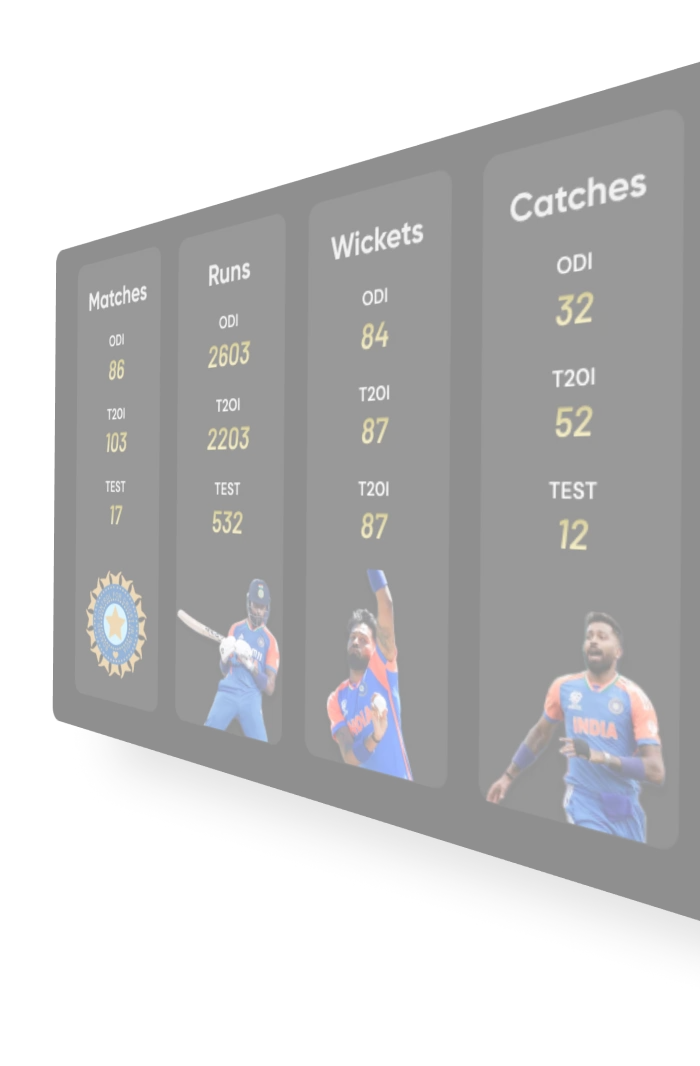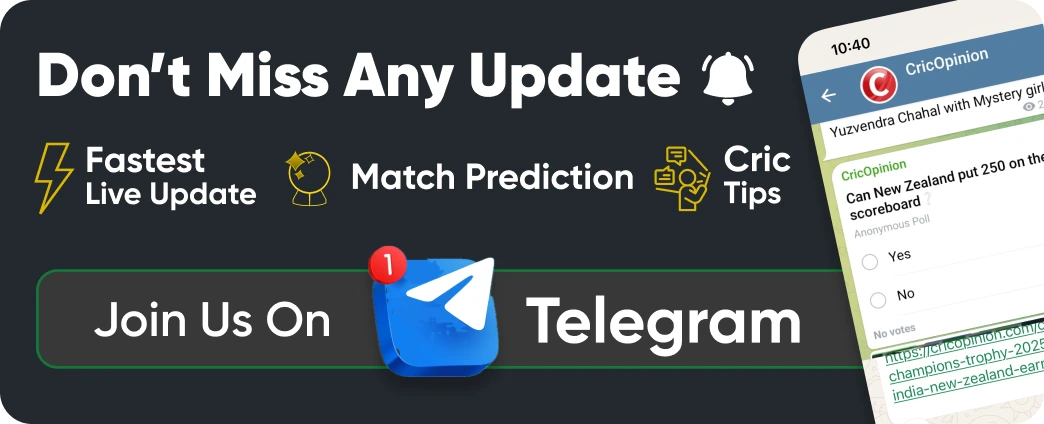
Table Of Contents
Each team will get only 60 seconds to change between the overs and be ready to start the next over. The team will receive two warnings for violating this rule. After two warnings, the umpires will impose a 5-run to the bowling team. Also, the warning will reset after 80 overs. This rule is assigned in the ongoing WTC cycle 2025-2027.
We have seen this in IPL and white ball international cricket as well that teams are allotted a certain time period to finish their quota of overs and if they failed to do so then they would get a penalty of keeping one extra fielder in the 30 yard circle for the remaining of the overs and in Test Cricket the teams violating this rule have to face deduction in the points as we saw with England team. But now to ensure a fair over rate, ICC has implemented this rule, which states that if the bowling team doesn't start the over within one minute of the previous over, they will be warned twice and, after that, the umpires will give 5 penalty runs to the batting team. Also, the warnings will reset after every 80 overs, which means if a team has already got one or two warnings before 80 overs, then the warning count will become zero after the 80th over.
We all know that Test Cricket is a long form of cricket and it takes time to proceed, unlike white ball cricket, and to ensure that the game is completed on time and no deduction of overs takes place, this rule will play a crucial role. Red ball is not so much visible under lights or when the visibility is low so if the bowling teams deliberately waste some time and take unfair advantage of time then they will be penalized by this rule and this rule will ensure that all teams and players remain disciplined to time and completed the quota of overs in the allotted time period even in red ball cricket.
The saliva remains banned from use if the player or team deliberately applies saliva to the ball to force the ball to change; then the umpires will not change the ball and can also impose a 5-run penalty on the batting team.
During the covid times ICC decided to ban the use of saliva on the ball and this rule still stands and but in recent times it was observed that teams who were unhappy with ball and wanted change the ball deliberately applied saliva to the ball because the rule demanded the ball to be changed immediately after any player applies saliva to it. Many times, teams took unfair advantage of these rules, so now the ICC has come up with a new rule that, even though a player applies saliva to the ball, the ball will not be changed unless there is a drastic change in the shape and size of the ball. Also, if any player of the bowling team deliberately applies saliva to the ball, then the batting team will be penalized by 5 runs.
Especially in red ball cricket, teams tend to change the ball in the middle of the innings when they see that nothing is happening with the ball (swing or seam). Then the players would try this trick to change the ball and try to bring in a new ball which would favour them, but now with the application of this rule, teams would be able to do so, and if they do, then they would get a penalty of 5 runs.
On a caught-out review, if UltraEdge shows no bat contact but the pad was struck, LBW is now considered. If tracking yields “umpire’s call”, the batter remains out, aligning with the on‑field decision.
Imagine if a batter is given caught behind or caught out, and he takes the review, and there is no spike show on UltraEdge, but the ball went on to hit the pads. Now, even though the spike was not seen on the UltraEdge, the third umpire will now check for LBW and ball tracking, and if the Ball Tracker shows Umpires call, then the batter would be out, aligning with the on-field decision of the umpires.
Earlier if the batter was given not out then verdict of second mode of dismissal that is LBW will also remain not out which means if there no spike on UltraEdge and the Ball Tracker shows umpires call then the batter would be given not out but now if the same situation happens and the Ball Tracker shows umpires call then the batter will out irrespective of the on field decision. This rule is in favour of the bowlers and will be helpful to ensure fairness in the Decision Review System.
If two appeals occur on the same ball, then the reviews will be handled in the order of their occurrence, and if the first review results in an out, then the ball will be declared dead, and umpires will not proceed with the second review.
Earlier, if their an appeal for both LBW and run out where the umpire review and players review are involved, then the third umpire used to take up the umpire's review first and then the players' review. For example, if there is an appeal for both LBW and run out on the same delivery, then the third umpire will check the review in the event of happening and will check LBW first, and if it is declared out, then the review would not proceed further and the ball will be declared dead.
This rule will remove all the confusion about the multiple reviews taking place on the same ball. It was very confusing for players as well as the spectators, but with the inclusion of this rule, it looks simpler.


Fairness of the catch will be checked even on a no-ball. If the catch is taken fairly, then the batting team will only get one run, and if the catch is unfair or dubious, then the batting team will get the runs they complete
If a catch is taken on the no ball then the umpires will check the fairness of the and if they feel that the catch of fair or clean then the batting will get only one run no matter how many runs the batter complete on the crease and if the catch is given unfair or unclear then the batting team will get the runs they complete on the crease.
Earlier, we saw that even if the fielder takes an easy or clean catch on the ball and the batters still runs more than one run the batting teams gets those runs but with the inclusion of this rule the batter and batting team gets only single run on the no ball when the catch is taken fairly.
While taking runs, if one of the batters is found not making their ground deliberately in order to steal an extra run, then the umpires will ask the fielding team which batter they want on strike, and additionally, five penalty runs will be awarded to the bowling team.
Earlier we have seen that batter would used to try and steal extra runs by deliberately not making their ground and also on some instances we this happening when the batter is batting with a tail ender and he feels that it will be difficult to complete 2 runs then batters deliberately took short runs to come on strike. But now, if any batter is found guilty of doing this will result in giving 5 penalty runs, and also the bowling team decides which batter they want on strike.
This rule is one of the best inclusions among all the rules, as we have seen that short runs happen often nowadays, mostly while a batter is batting with a tail ender, but now the strictness of this rule will force all the batters to complete the runs and make their ground while completing runs.


This rule is for domestic cricket, which states that if any player is seriously or externally injured during the course of the game, then the team is allowed a like-for-like replacement of the player in the match. This rule is a trial-based rule and completely depends on cricket boards whether they want to continue to use this rule or not.
We have seen the use of an impact player in IPL and also the concussion substitute in international cricket, but this rule says if a player is injured during the course of the match, then he/she can be replaced by a like-for-like player for the rest of the match. The umpires will make the decision whether to allow a replacement player or not. No replacement player will be given for muscle pulls or niggles.
This rule will be tried on a trial basis in domestic cricket. Earlier, the players injured for concussion were replaced with a like-for-like player, but now if any player is injured seriously or externally during the match, then teams can get a replacement or a substitute player for the rest of the game so this will not impact the team's combination and plans during the ongoing match.




More Links